The Eye: From Man to Machine
3D Rendering of potential exhibition at the Cooper Hewitt, Smithsonian Design Museum
The exhibition is split into three sections moving down the exhibition space:
Past-Pre digital visualizing technologies; looking through experimental visualizing technologies and finding throughlines to how they influenced future imaging tech development; what is the machine eye and how is it different from the human eye
Present-Digital to the neuvo VR resurgence; Digital Camera to the Oculus Rift (time period); what does the digital eye mean for the human eye--does it become more than human or is it an extension of it; where is our visualizing technology now and what problems is it addressing/what problems or user groups are still left out of the canonical loop of visual technologies
Future-Vision and Art for the future; pieces of art or speculative blueprints of potential technologies; the interactive section of the exhibition
“Welcome to Cooper Hewitt, Smithsonian Design Museum. Cooper Hewitt is the only museum in the United States devoted exclusively to historical and contemporary design, and is the steward of one of the most diverse and comprehensive design collections in existence—more than 215,000 design objects spanning 30 centuries. From ancient textiles and works on paper to icons of modern design and cutting-edge technologies, Cooper Hewitt’s collection serves as inspiration for creative work of all kinds and tells the story of design’s paramount importance in improving our world.”
-(About Cooper Hewitt: Cooper Hewitt, Smithsonian Design Museum 2022)
The Cooper Hewitt Museum is a museum that strives to make innovative exhibitions that are both visually/ haptically intriguing and educational. They are far ahead of any other museum in New York City in technological advancement and accessibility. With The Eye: From Man to Machine it continues to explore the connection between design, technology, and image and helps visitors see how the ways of seeing has changed and evolved through time.


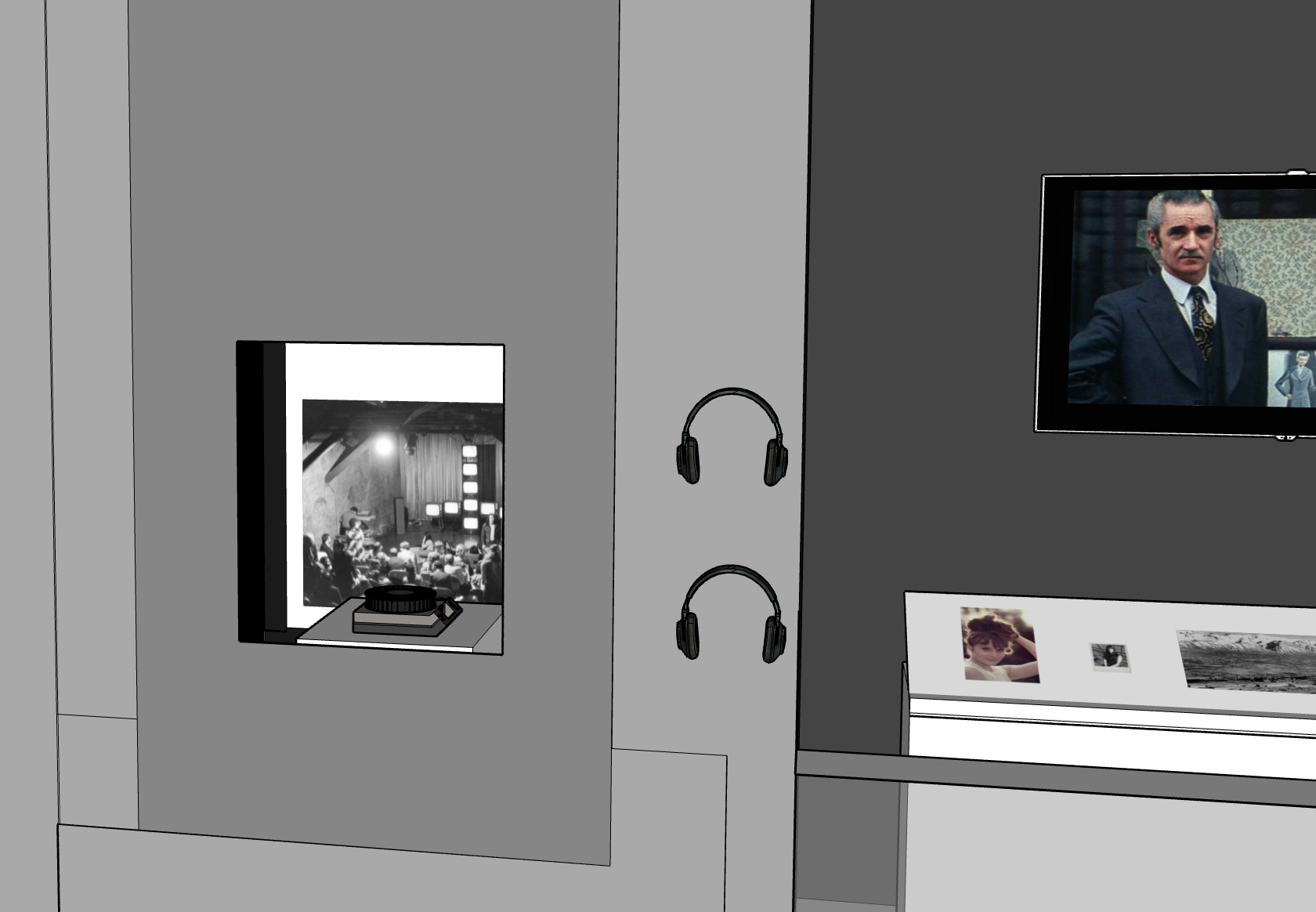

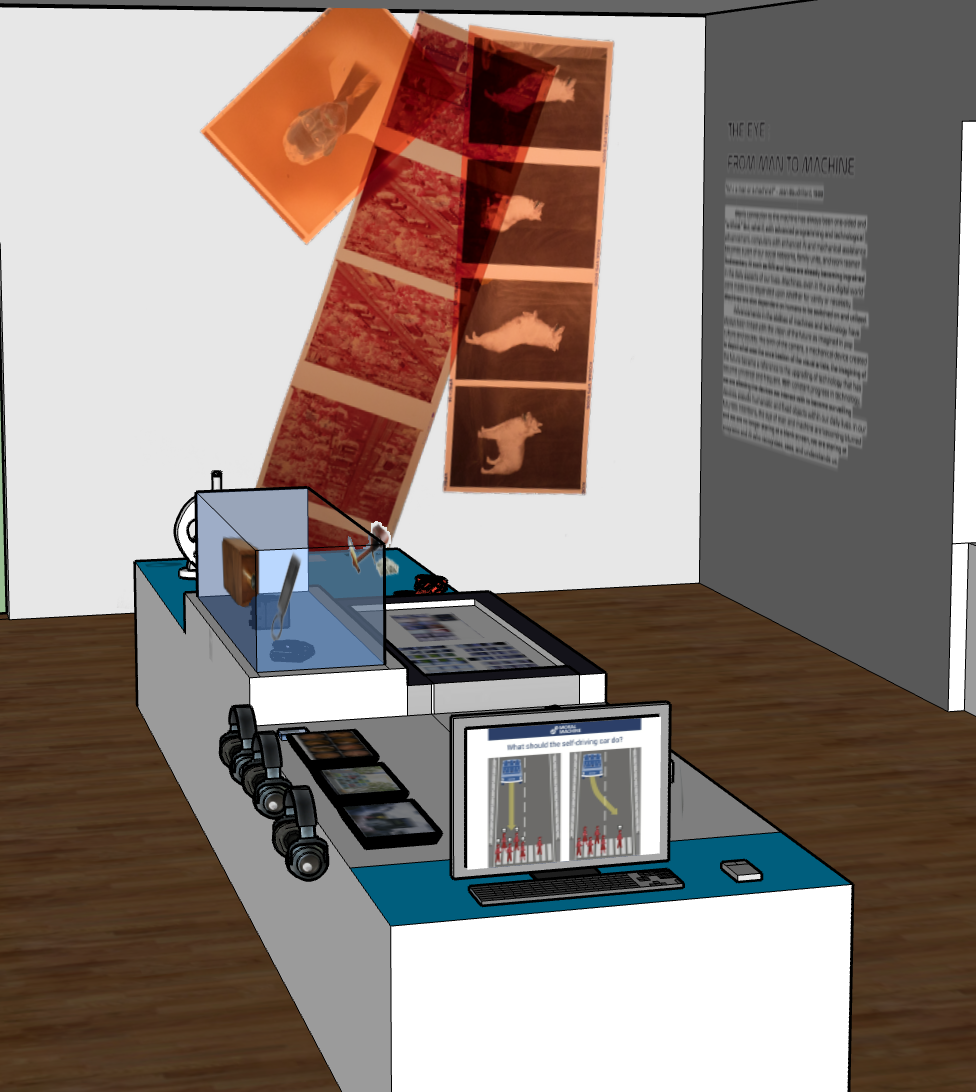
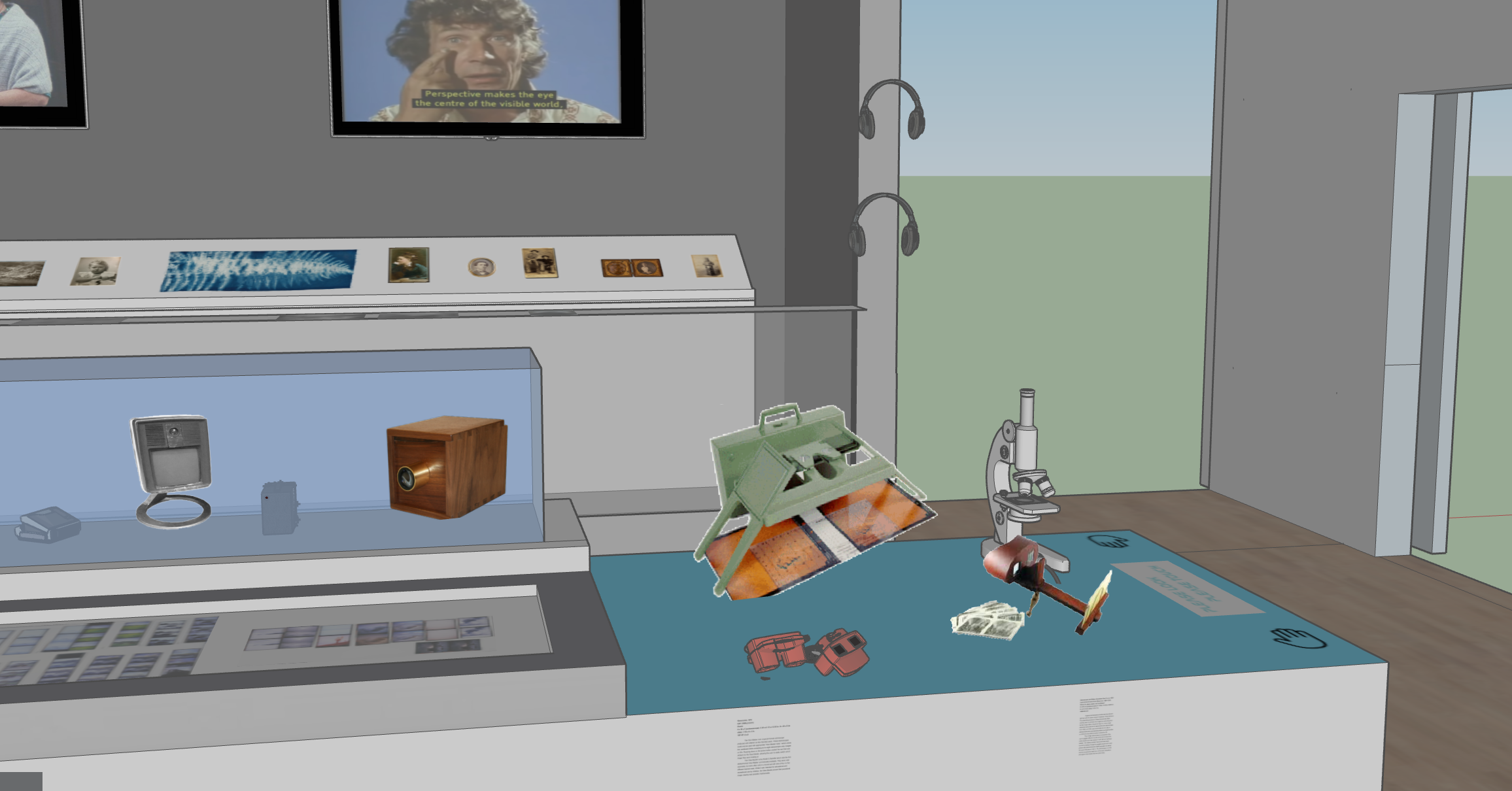


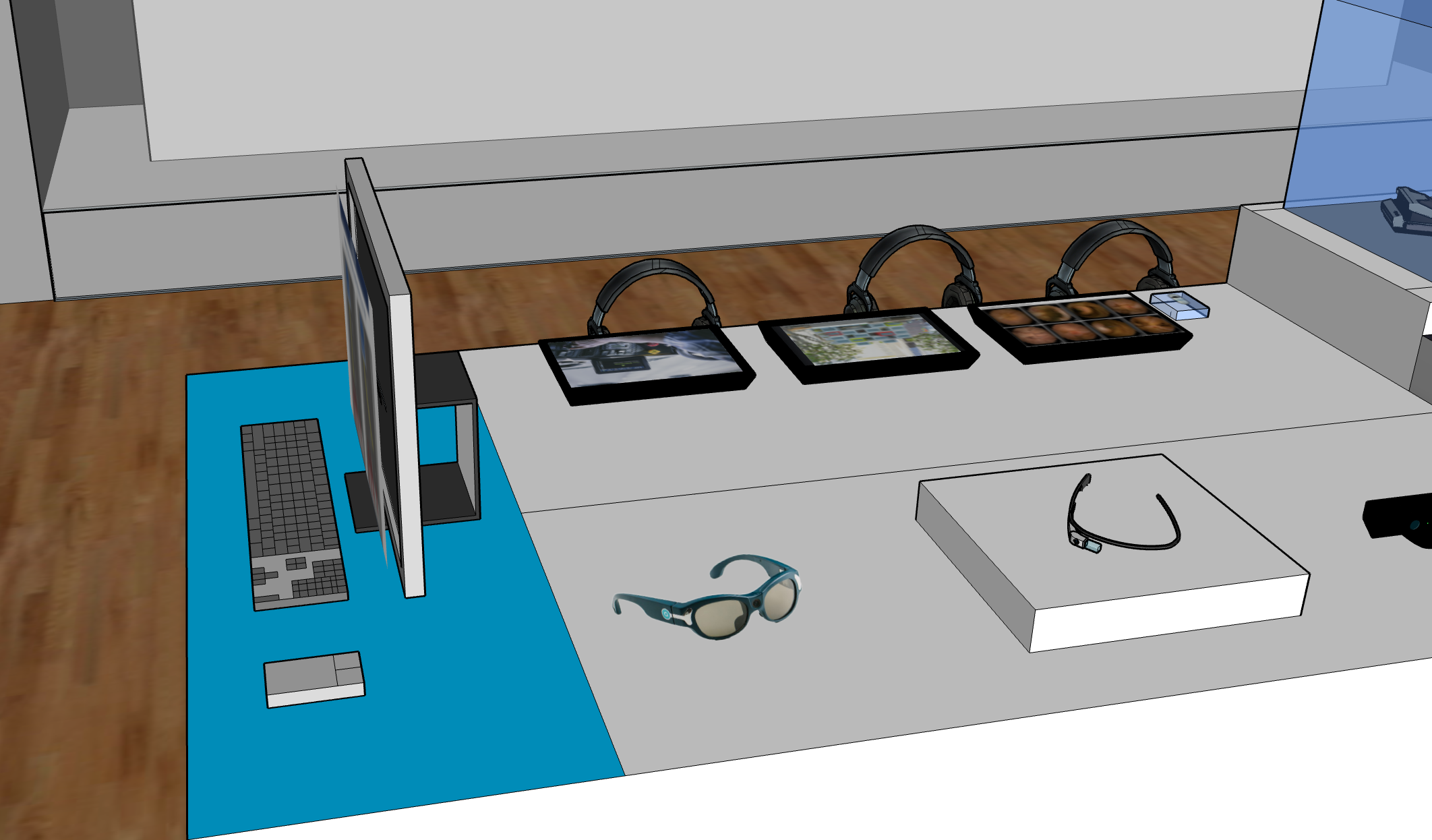
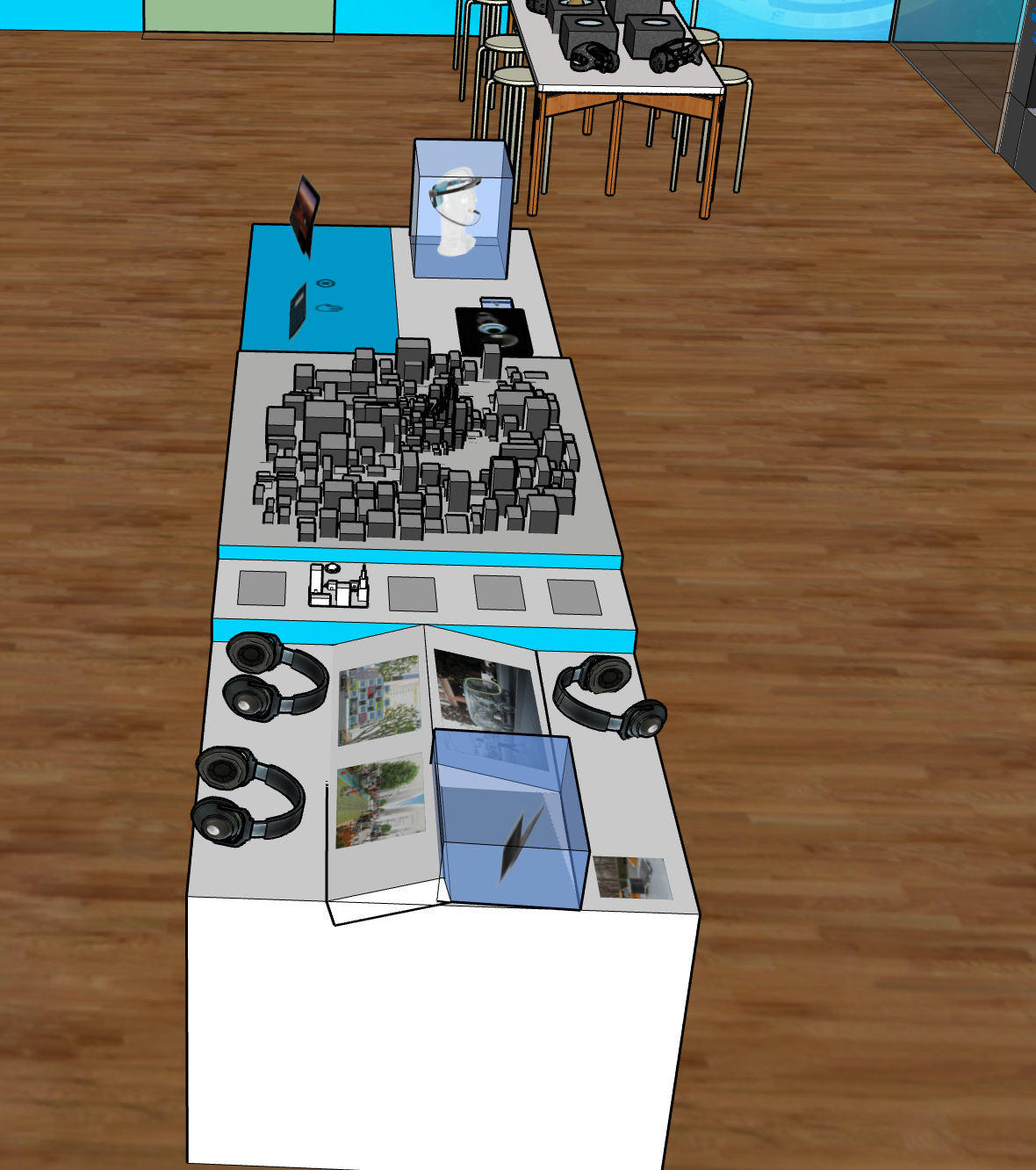
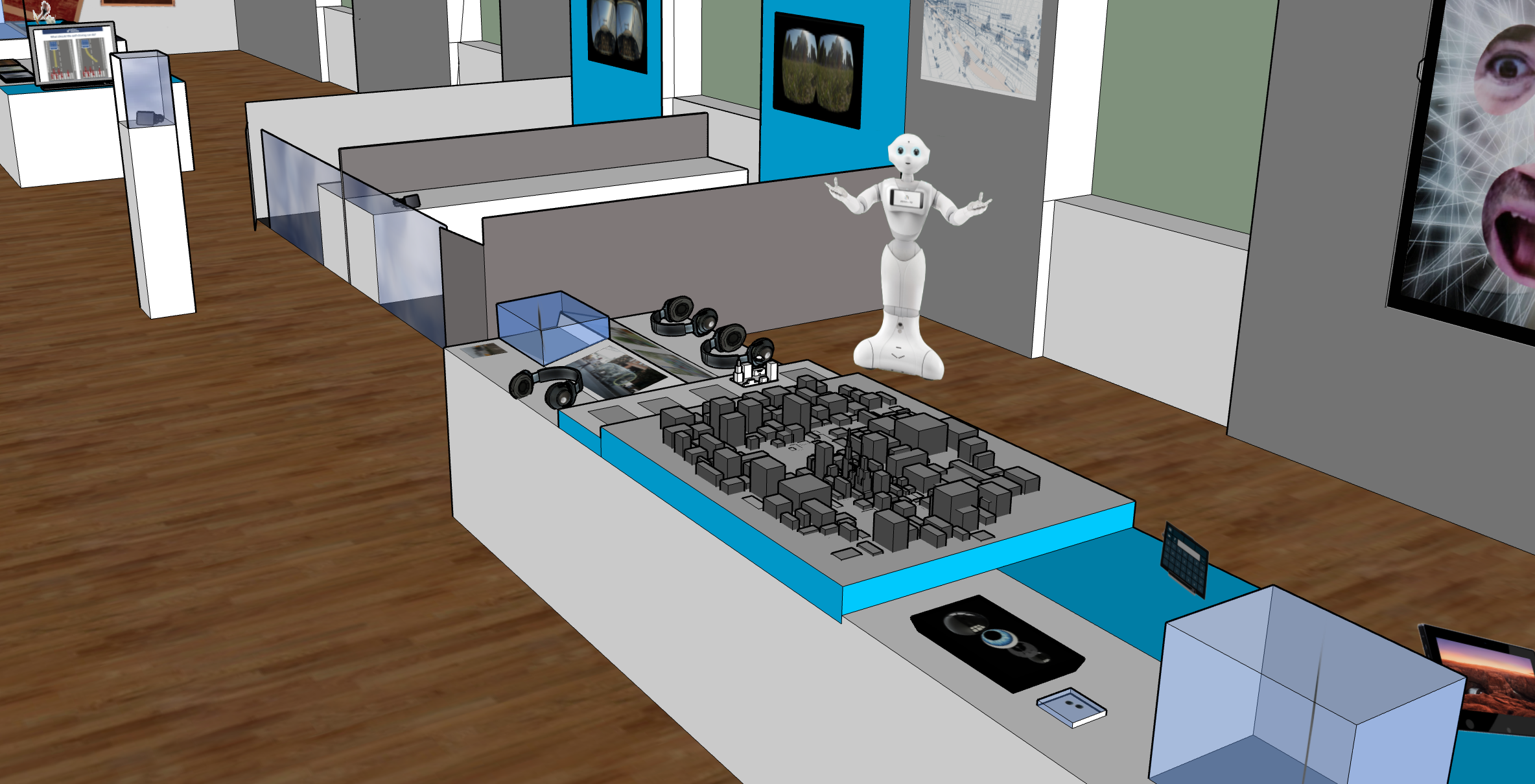
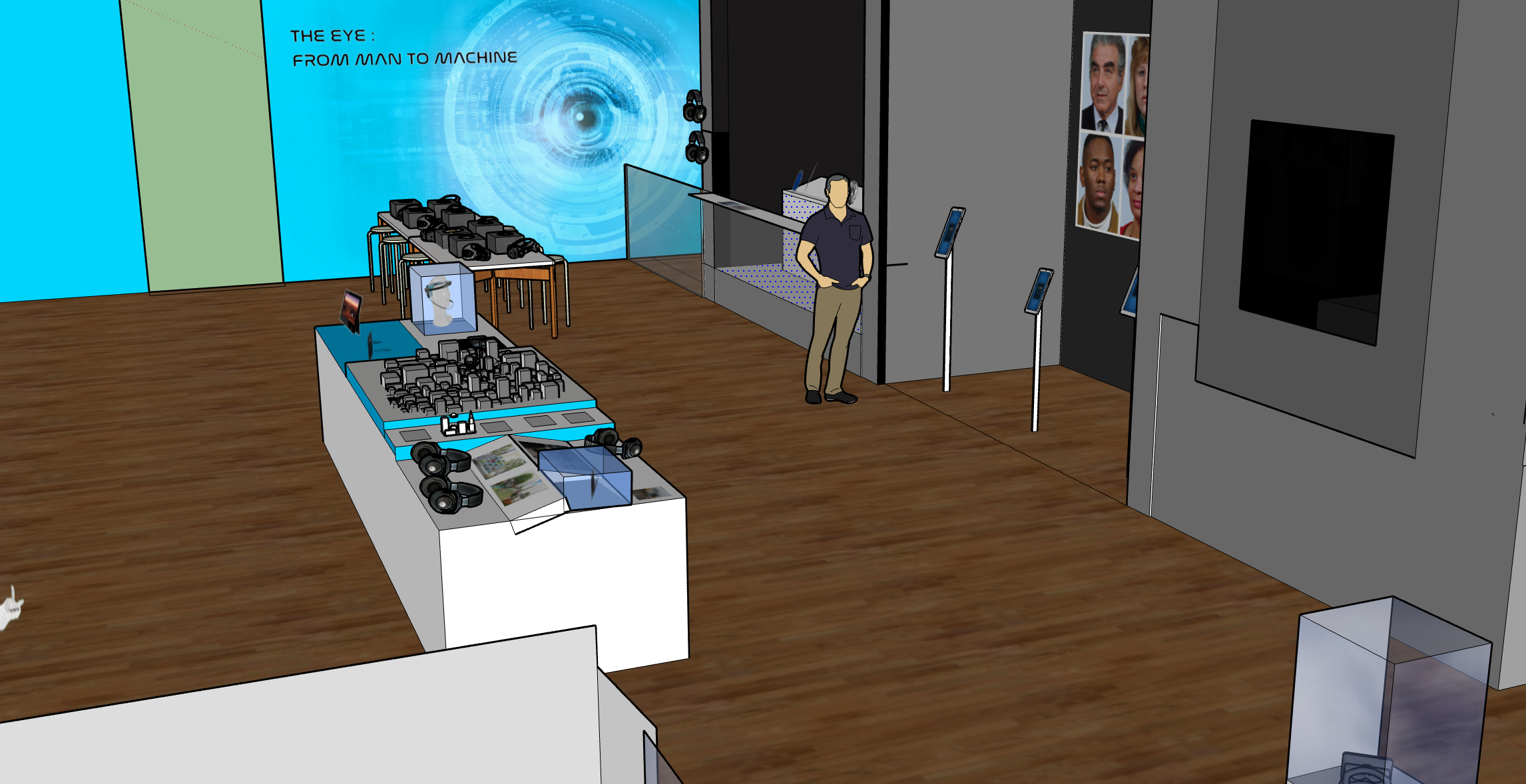

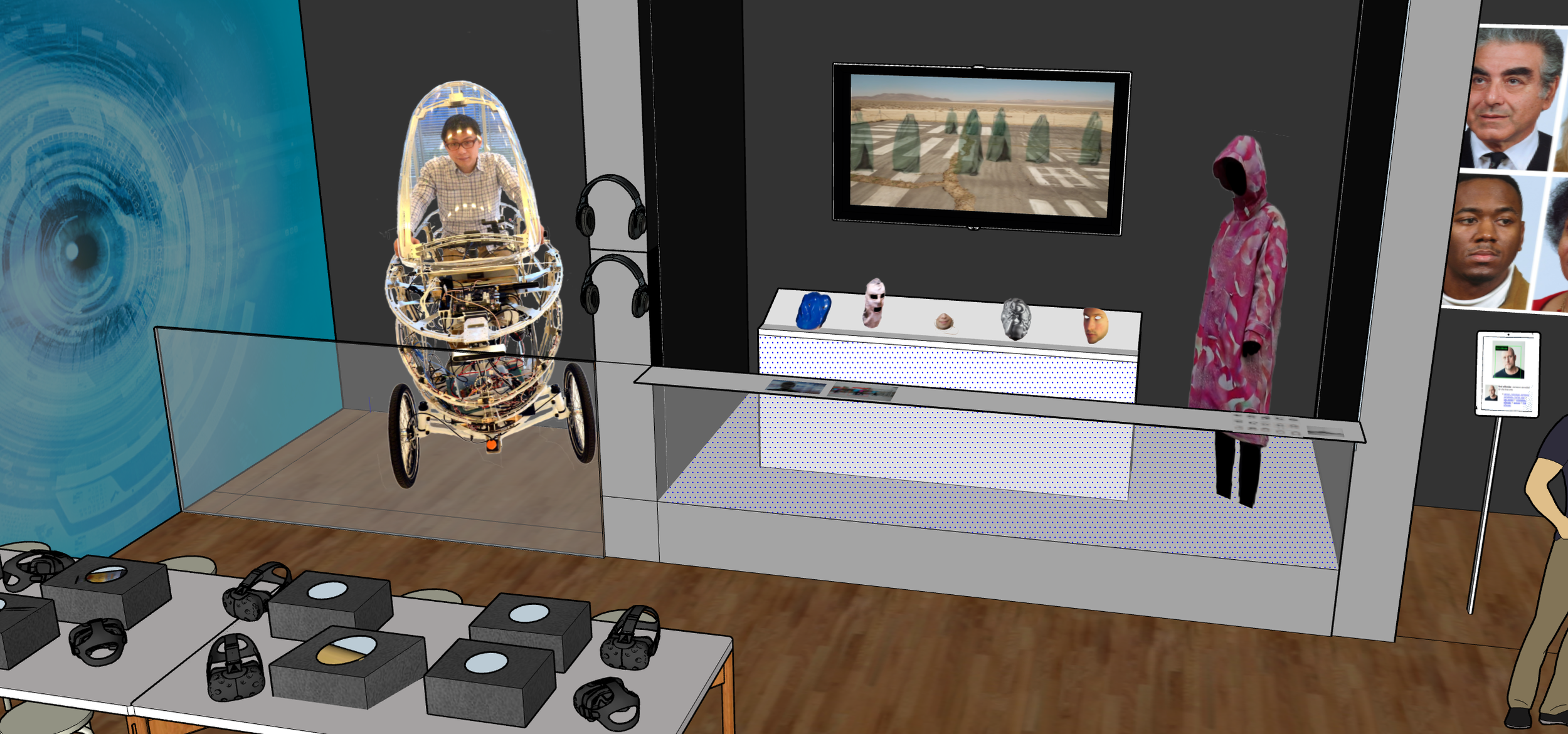
PAST
Pre-digital visualizing technologies and tools
The birth of the mechanical eye and reproducibility of a image
The objects in this section are precursors to the objects in the following two section of the exhibit
Pinhole cameras, film cameras, stereoscopes, viewmasters, slide projector, microscopes, and examples of different photographic and imaging processes are some of the objects included in this section
PRESENT
This section is from the beginning of digital to the resurgence of VR
Introduction to the digital eye and easily dispersible information and imagery
This section addresses the movement towards our technology being extensions of us and the encroachment of visualizing the progress of society through a technological lense
Some objects in this section include the Oculus Rift, Google Glass, PillCam SB3, Moral Machine, Kinect, and a 4K projector
FUTURE
In this section we are focussing on vision and art of the future
We chose pieces of art or speculative blueprints of potential technologies as well as experimental pieces that express the anxieties towards the progress being made in in facial recognition, AI, VR, and data gathering softwares
Some objects in this section include city scanners, facial recognition profiling software, autonomous sustainable package delivery vehicles, and art by Trevor Paglen and Hito Steyerl
Cooper Hewitt Object Checklist
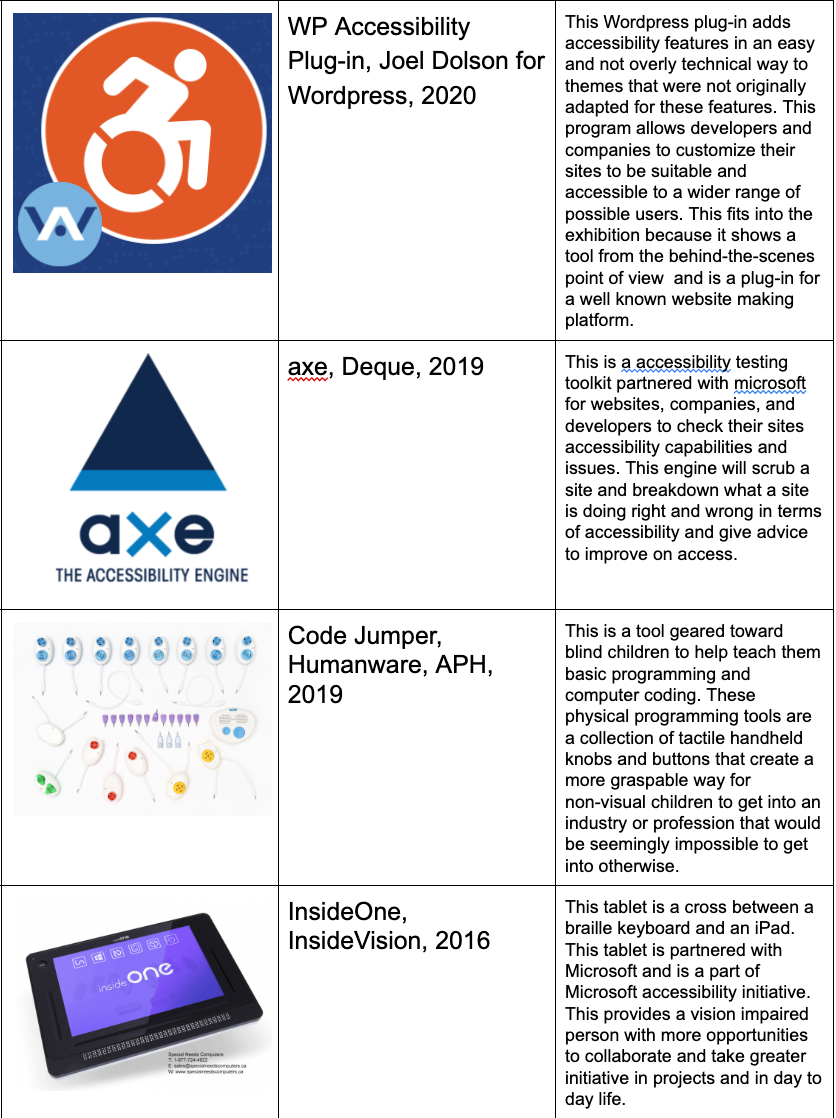
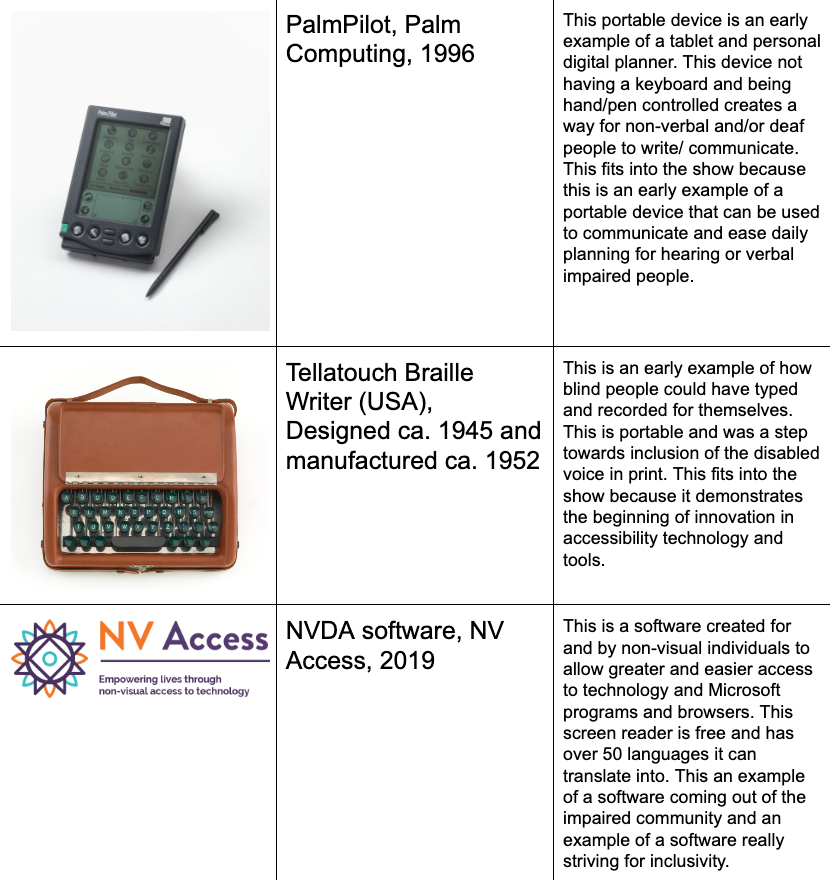
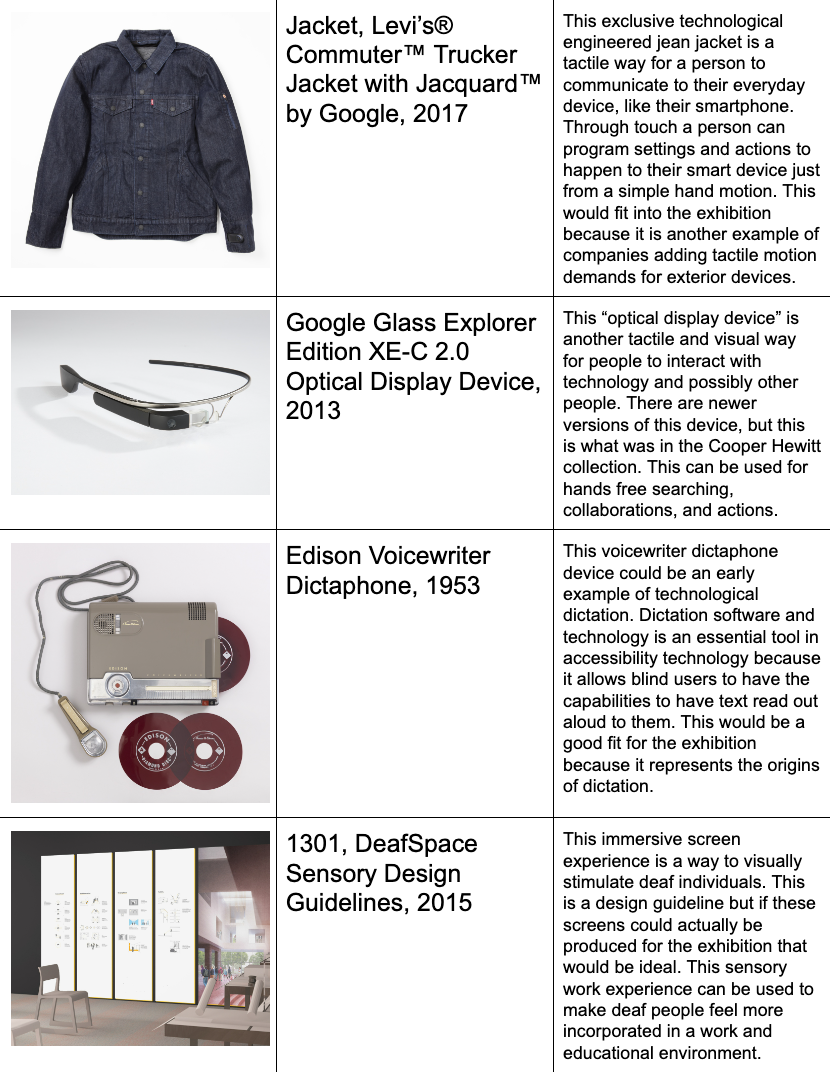
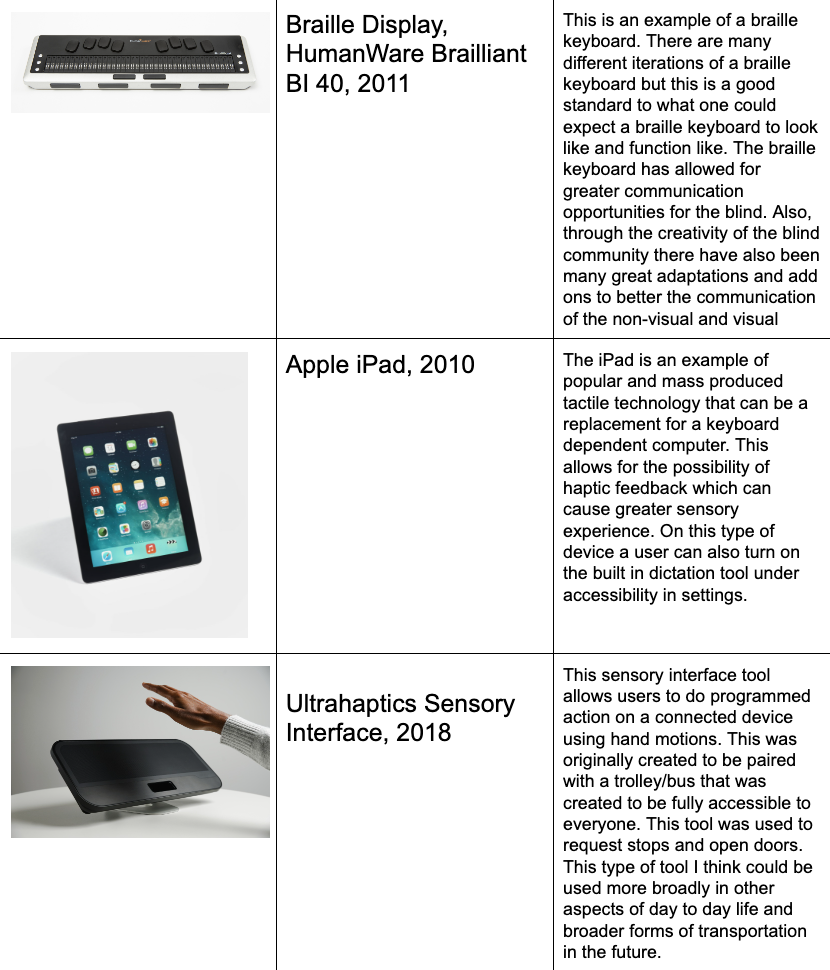
Man’s connection to the machine has always been one-sided and “artificial.” But, what if, with advanced programming and technological advancement, computers with enhanced AI and mechanical assistance becomes a part of our social networks, family units, and work teams? Rudimentary AI such as Apple’s Siri and Amazon’s Alexa are already becoming ingrained in the daily aspects of our lives. Machines, even in the pre-digital world were made to be depended upon whether for vanity or necessity.
Advancments in the abilities of machines and technology have always been linked with the vision of the future as imagined in pop culture and society. The birth of the camera,a mechanical device created to depict what was the once bastion of the visual artists, the imagining of the future became a reference to the upgrading of technology that has we are allowing the devices we interact with to become surveilling futuristic intentions, the eye of man and machine are becoming blurred and we are no longer staring at a blank screen, we are staring at programs and AI who recognizes, sees, and understand us.
With artificial intelligence, facial recognition, and data-gathering software, we are no longer alone when we are on our devices. Our devices and technological tools are essential in our daily lives, having become the constant watchman, this attribute of interaction and presence can be used to benefit the greater good in fields such as city planning or accessibility needs, and for fun in gaming and education. This can also be used maliciously to gather information about us for marketing and wrong-doing. We continue to strive towards the Jetson Family vision but at what cost?
“Am I man or a machine?”
— Jean Baudrillard, 1988






